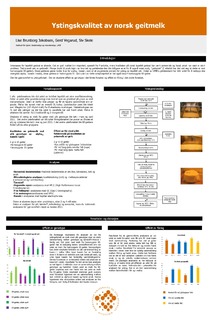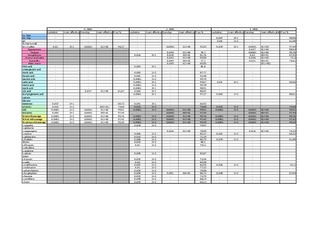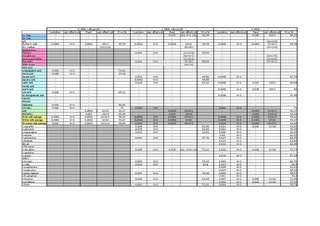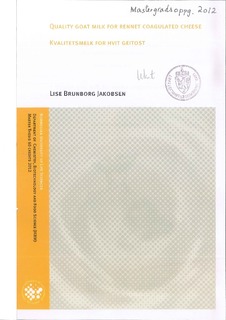| dc.description.abstract | The differences in milk quality between the αS1-CN genotypes of goats have been studied in different goat breeds in several countries. It is in general accepted that the cheese making properties of the high αS1-CN variants are preferable. But few studies have investigated the effect in ripened cheese. The objective of this study was therefore to investigate the differences on the cheese making properties and ripening between milk from a high αS1-CN genotype and from the “null” genotype with absence of αS1-CN of the ordinary Norwegian goat breed. The cheese making was standardized so that the cheese was comparable from production to production without any other experimental factors than genotype. The study included analysis of free fatty acids (FFA), free amino acids (FAA), organic acids, dry matter, microbiology, pH and sensorial analysis. In addition coagulation properties (formagraph) and composition of milk from each goat was analysed one week after each cheese making. The composition (fat and protein) and the coagulation properties (K20 and A30) of milk from goats of the high αS1-CN variant were preferable for cheese making. Further it appears like the milk from the high αS1-CN variant leads to a better and more stabile cheese quality during lactation. The cheese from the “null” αS1-CN variant milk had lower % dry matter content, which implies that the cheese matrix is trapping more water, and a frequent rancid flavour. Kvalitetsforskjellen mellom geitemelk fra ulike αS1-CN-genotyper har blitt undersøkt i ulike geiteraser og i ulike land. Men få studier har undersøkt effekten av genotyper på modnet ost. Formålet med denne studien var derfor å undersøke ystingsegenskapene og modingen av ost ystet av melk fra geiter med gener som koder for et høyt innhold av αS1-CN og av geiter med “null” gener som har fravær av αS1-CN i melka. Ysteprosessen var standardisert slik at osten skulle bli sammenlignbar fra produksjon til produksjon uten andre eksperimentelle faktorer enn genotype. Studien inkluderte analyser av frie fettsyrer (FFA), frie aminosyrer (FAA), organiske syrer, karbohydrater, tørrstoff, mikrobiologi, pH og sensorisk bedømmelse. I tillegg ble koaguleringsegenskaper (formagraf) og sammensetning av ystemelka fra hver enkelt geit analysert. Sammensetningen (protein og fett) og koaguleringsegenskapene (K20 og A30) til melka fra geitene med gener som koder for et høyt innhold av αS1-CN egnet seg best til ysting. Videre viste det seg at denne melka førte til en mer stabil kvalitet på osten gjennom laktasjonen. Osten ystet av melk fra “null”-genotypen hadde et lavere tørrstoffinnhold, som tyder på at ostematriksen holder på mere vann, og en hyppig forekomst av harsk smak. | no_NO |



